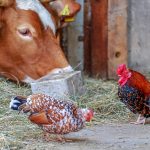Cooking dark meat of chicken in a retort, which is a sealed and pressurized container used for heat processing foods, can bring about several changes to the meat’s texture, color, flavor, and overall characteristics. The retort cooking process is commonly used for canning and preserving food, and it involves heating the food to a specific temperature under pressure to ensure it is safely cooked and shelf-stable. Here are some changes that can occur when dark chicken meat is cooked in a retort:
1. Texture: Retort cooking can lead to changes in the texture of the dark meat. The combination of heat and pressure can break down connective tissues and collagen in the meat, resulting in a tender and more easily chewable texture. This can be especially beneficial for tough cuts of meat like chicken thighs and legs, as it can help make them more palatable.
2. Color: The color of the dark meat can undergo changes during retort cooking. The myoglobin protein responsible for the meat’s reddish-brown color can undergo denaturation due to the heat and pressure. This denaturation can cause some color loss, leading to a slightly paler appearance compared to the raw meat. However, the specific color change can vary depending on the cooking time, temperature, and pressure used in the retort process.
3. Flavor: The flavor profile of the dark chicken meat can also be affected by retort cooking. The combination of heat and pressure can enhance the breakdown of fats and proteins, resulting in the development of deeper and more complex flavors. However, prolonged retort cooking at high temperatures can lead to flavor degradation due to Maillard reactions and other chemical changes.
4. Moisture Content: Retort cooking can impact the moisture content of the meat. The high temperatures and pressure can cause some moisture loss from the meat, which can result in a slightly drier texture. To counter this, many retort-cooked products are packed in sauces or brines to help retain moisture and enhance flavor.
5. Safety and Shelf Life: One of the primary purposes of retort cooking is to ensure the safety and shelf stability of the food. The combination of high heat and pressure destroys harmful microorganisms and enzymes that can cause spoilage and foodborne illnesses. This makes retort-cooked dark chicken meat suitable for long-term storage without the need for refrigeration.
6. Nutrient Retention: Retort cooking can lead to some loss of water-soluble vitamins and nutrients due to the heat and pressure. However, compared to traditional cooking methods, retort cooking tends to retain more nutrients because it involves shorter cooking times at higher temperatures, which can help preserve the nutritional content of the meat to some extent.
In conclusion, cooking dark chicken meat in a retort can result in changes to its texture, color, flavor, moisture content, safety, and nutrient retention. While the color may become slightly paler due to myoglobin denaturation, the other changes—such as improved tenderness, flavor development, and safety benefits—are often the primary goals of retort cooking. The final characteristics of the retort-cooked dark meat will depend on factors such as the specific retort parameters, processing time, and the initial quality of the meat used.

I notice this colour change when I do my roasting!